Regardless of the scale of your home, it is almost certain that you are not maximizing your space to the fullest extent. Manipulation of lighting, furniture, and the introduction of mirrors can all bring a sense of lightness and airiness to your home, bringing an illusion of space with them. Additionally, some practical steps can physically increase the amount of useable room in a building, bringing functionality and comfort.
The importance of maximizing space cannot be overestimated. Bringing personality and spaciousness into your home can improve your well-being in multiple ways. If your home feels cramped and small, your mental health can take a hit as it can make you feel small and undervalued. This is especially pertinent if you live in a busy, bustling city. Here are some tips to help you enhance spaciousness in your home.
1. Include Mirrors
Mirrors are, without a doubt, one of the most effective ways to bring a sense of spaciousness to a small home, particularly if you are working with limited natural light. If you have a small room with no windows, consider introducing a large, framed mirror. This can open up space and avoid the sense of claustrophobia that can be prevalent in smaller homes.
Using mirrors to tastefully bring light and spaciousness to a room is an excellent option. They can be used to highlight areas by drawing the eye of onlookers. So, whether you opt for a large, statement mirror to create oodles of airiness, or multiple small and ornate mirrors to bring a quirky personality to your home, mirrors are a must-have for smaller spaces.
2. Don’t Forget the Garden
If you are lucky enough to have an outdoor area, you should not neglect this when maximizing the space available to you. With some clever adjustments and additions, you can effectively turn your garden into an extra room that benefits from the spaciousness of the great outdoors.
Consider adding an outdoor seating area that you can use for alfresco dining, relaxing, or even to work if needs be. One way to facilitate this could be to introduce a patio area. This could be done using paving or decking, depending on your taste and budget. A patio will give you a solid ground to place some garden furniture, a fire pit or even an outdoor cooking space. Ultimately, this will allow you to free up some indoor space, making the building feel roomier.
If you plan to make your garden usable year-round, it is a good idea to consider covered and heated areas. It’s worth looking at awnings to cover the patio area. These will shield the space from the elements, bringing more functionality. Awnings, paired with outdoor heaters, mean that you will be able to use the garden area regardless of the season or weather constraints.
3. Knock Down Walls
Open plan living is becoming increasingly popular, and for a good reason. Removing walls between two smaller rooms to create a spacious living area is an excellent method for improving the space available to you in your home. Open plan areas have a distinct and stylish airiness, especially if your house has high ceilings. This brings a modern, sleek aesthetic that can completely transform the space you live in.
If you want a more open plan living arrangement, you need to ensure that you effectively zone the space. You can create different areas within the same room by using rugs and sofas to divide the space. This can help to generate distinct spaces within the same room while benefitting from the added sense of airiness that comes with open plan living.
4. Utilize Vertical Room
Building up within your home is often one of the most cost-effective ways to increase the usable space available in the building.
One of the most popular ways to do this is to do a loft conversion. These rooms are generally low-cost compared to adding an extension to your home. When converting a loft, you do not need to consider adding additional foundations or groundworks to the building, which is often one of the most expensive parts of building extensions. Additionally, loft conversions do not require planning permission, so they will generally take less time and cost less money.
Another way that you can use vertical space in your home is to maximize the vertical storage options. If your home has high ceilings but limited floor space, then consider building upwards when it comes to storage options. This will declutter the useable areas of smaller rooms, giving you more freedom to add useful furniture or decorations.
5. Extend Outwards
If your building isn’t suited for a loft conversion, but you are still keen to add rooms and space to your home, consider adding an extension to the building. You can extend at the rear or sides of your house, and it is still a reasonably cost-effective method for bringing space.
You will need to add new foundations to the area you wish to place the extension, which will increase the cost of the building work, but with this, there is also a higher degree of versatility than loft conversions. For example, the space that you need to maximize may be on the ground floor. Therefore, if you wish to turn your kitchen into a larger, open plan kitchen/diner area, then an extension is probably your best bet.
If you are considering an extension, you should still consider some factors to avoid sacrificing the brightness of other rooms. Often, when people extend their homes, they simply add a boxy structure to the back of the house. This can lead to a sense of gloominess in the rooms in between since they will no longer have natural light. Therefore, when planning an extension, make sure that you carefully consider how you will open up the existing rooms in the home.
6. Use Lighting Cleverly
Light, like mirrors, can make space feel larger than it actually is. Therefore, by utilizing different combinations of overhead, free-standing and directional light, you can create an illusion of space in smaller rooms.
Additionally, it is important to maximize the natural light coming into your home. If the windows of your building are not regularly cleaned, the amount of light that can go inside is dramatically decreased. Therefore, you must ensure that you have your windows professionally cleaned routinely to enhance the illusion of space in the building.
Another way that you can play with light is to consider the colours of the walls, ceilings and floors in your home. Generally, lighter colours will have an airy and spacious feeling, as they are better at reflecting light. If you wish to make your ceilings feel higher than they are, you should consider painting them white. This will make rooms feel taller.
Conclusion
In summary, there are many options available if you are looking to expand the space in your home. Whether you are working with a limited budget or have the money available for renovations on a large scale, some simple rearrangements can often have a drastic effect. Therefore, if you are want to improve the sense of space in your home, you should play with lighting and mirrors regardless of whether you intend to physically increase the floor plan of your house.

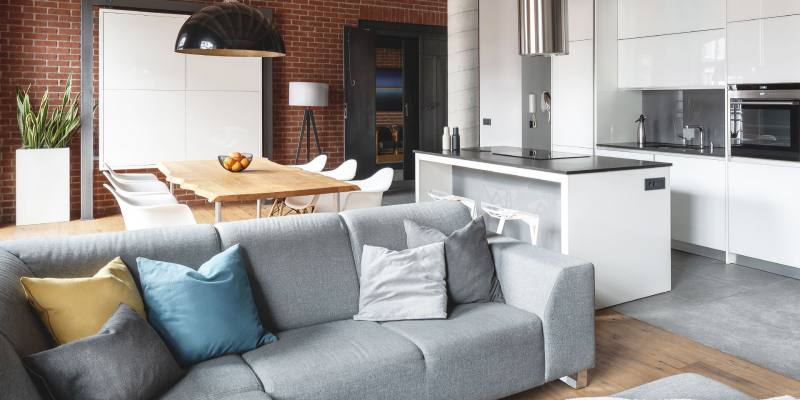

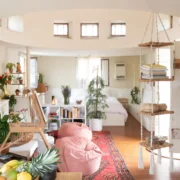

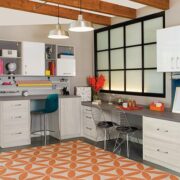

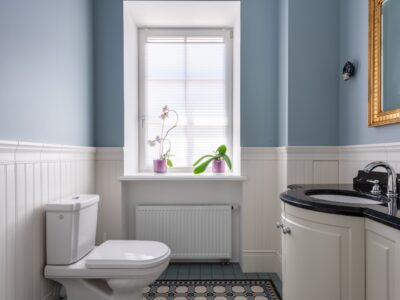
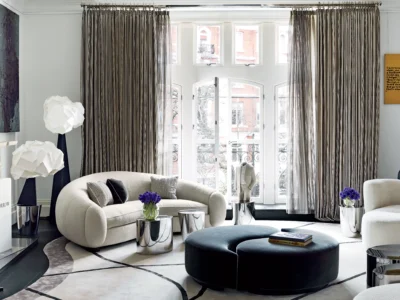

Comments